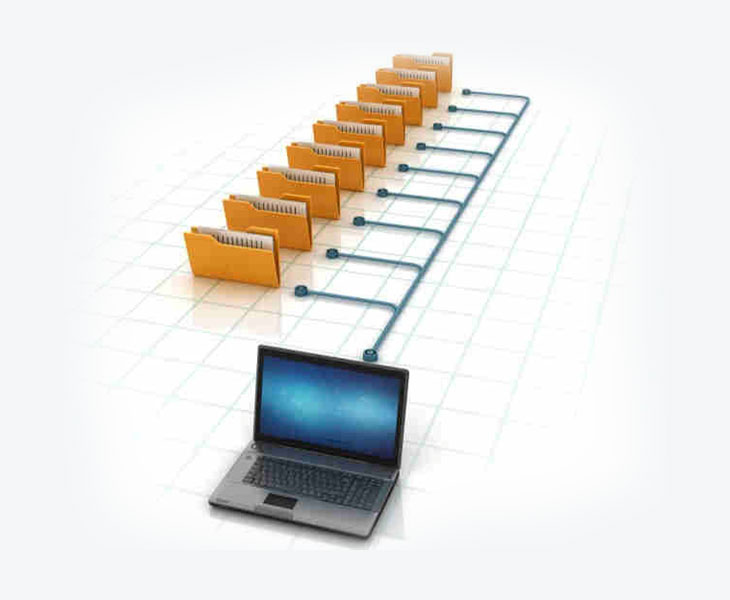
When most of our work is on digital devices, people are still don’t know much about their cybersecurity. Most of the organizations have no protocol for avoiding cyber incidents or dealing with them effectively. This makes a large percentage of organizations vulnerable to all kinds of cyber threats. A cyber threat is typically when someone can harm your IT system or network assets. A threat will be possible only when your organization or network has a weakness that cybercriminals can target. Cybersecurity protocols are relevant to companies’ growth, reputation, and funds, and having reliable cybersecurity strategies requires a professional set of people and technology that can prevent and prepare you for any cyberattack that can occur in your organization.

Digital Insights offers managed security services with our Security Operations Centre (SOC), WatchTower365, providing 24×7 network monitoring, cyber threat hunting, incident response, EDR and so much more for complete network security. It is more important now than ever to secure your data with employees working from home. WatchTower365 is available as SOC as a Service and SOC in a Box. To find out more, please visit www.dic-uk.com or contact us via +44 (0)203 130 1723 contact@dic-uk.com
Here are the top cybersecurity vulnerabilities that your organization should avoid:
New malware files are created every day and they are often the older files with a few changes to make them unrecognisable to antivirus software.
The most common types of malware that your organization can be vulnerable to are:-
Basic antivirus software is very ineffective against these kinds of threats. Professional help with skilled experts is required to prevent and detect these types of cyber vulnerabilities.
As organizations grow, they generate and collect more data which makes them more targetable for hackers and fraudsters. Your organization’s cybersecurity protocols should offer you secure backup and recovery plans of its classified information which most companies fail to make because of lack of understanding or budget issues.

Organizations need proper endpoint protection that can block cyberattacks on computers and the company’s network. Most of the antivirus software that a company uses is easily bypassed to gain access to the company’s IT system. Moreover, most of the antivirus software is not made to fight sophisticated interferences by hackers using the latest malicious software and malware. Digital Insights offers Endpoint Detection and Response to ensure the first line of defence against cyber-attacks.
The topmost need for cybersecurity should be safeguarding your sensitive and confidential data. And even the best cloud security network tools are only able to prevent critical information at a technical level. Social media sharing is a common error which, if left untreated, can lead to a severe security breach. And if any information like usernames and passwords or any sensitive information related to your company is posted online on websites like WikiLeaks, it could be very dangerous for your organization.
Phishing attacks are a major reason for hackers and fraudsters gaining access to the company’s network and computing system. Even the most innocent looking emails can be the reason for a data breach in your organization. It is always better to train employees and make them aware of phishing attacks like SMS made to look like an official brand or an email from a co-worker asking for passwords.

When antivirus software is not up to the speed of the latest malware intrusions, the network security of your organization is compromised without your knowledge. And as a result, hackers can easily make most of their spying malware solutions, specifically the key loggers that can steal your company’s classified information.
There are many ways a computer can get infected. For example, public WIFI’s, inadequate antivirus software, or downloading files from any unknown sources. Moreover, hackers are equipped with discreet tools such as RATs which means Remote Administration Tools that let hackers’ access everything that is secured on a specific device.
Day after day, hackers are getting more innovative and with the help of the dark web, cybercriminals have reached new levels. Hackers with only limited knowledge of hacking and almost no experience can target cybersecurity vulnerabilities of an organization. But on the other hand, if hackers are approaching with ‘buy and install tool’ method then the IT department and cybersecurity companies can also gather new knowledge and develop tools for cybersecurity.
E-commerce sites are now very common, netizens are obsessed with the online shopping culture and there is nothing that you cannot purchase online. Many websites get targeted by hackers that want to use exploit kits to collect sensitive information like credit card details, phone numbers, addresses, and also email ids. Typically, this involves creating a fake website that appears credible and safe to use. And any online transactions made on these websites can jeopardise sensitive information about the users.
Some companies due to any reason are forced to use outdated and unpatched software systems to support tools that are not compatible with the latest software versions. This is one of the reasons that can lead to cybersecurity vulnerabilities inside your organization. These outdated technologies can be critical for the infrastructure network of the company.
To find out more, please visit www.dic-uk.com or contact us via +44 (0)203 130 1723 contact@dic-uk.com
Copyright @2022 DIC UK. All Rights Reserved.
Thanks for sharing. I read many of your blog posts, cool, your blog is very good.